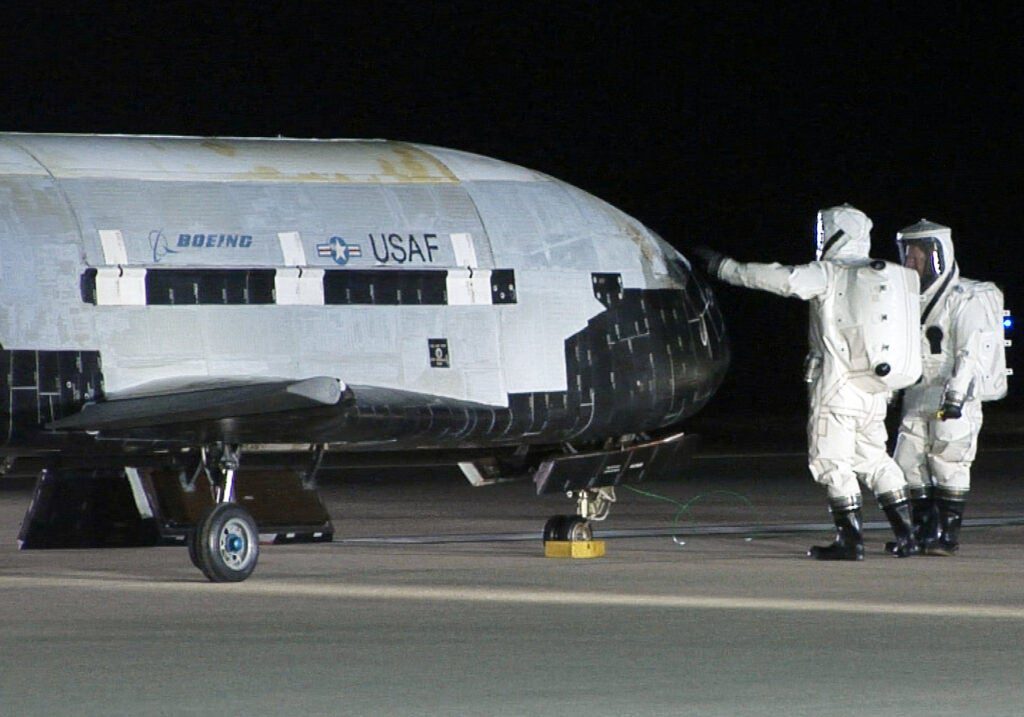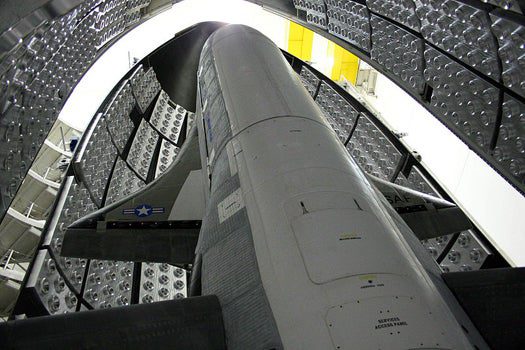
X-37B After Landing
The Air Force’s X-37B–its secret robotic space plane that’s been orbiting the Earth on a mission shrouded in mystery for more than a year–landed safely in the wee hours Saturday morning at Vandenberg Air Force Base in California. Orbital Test Vehicle 2 (OTV-2) is the second X-37B test vehicle to successfully complete an orbital mission and autonomously return to Earth, following sister spacecraft OTV-1’s 225-day mission in 2010.
That original mission lasted 224 days, a figure that at the time was mind-blowing for a top secret robotic spaceplane. It led to wide speculation about what the X-37B’s are really capable of–the Air Force maintains that it is simply learning how to quickly recover and launch robotic spaceplanes, nothing more–as well as what their pickup-truck-sized cargo bays might be holding (the Air Force is silent on the latter point).
Regardless, OTV-2 just blew OTV-1 and even its own design parameters clean out of the water. The most recent OTV mission lasted for 469 days on orbit, more than twice the length of OTV-1’s inaugural mission and surpassing its own 270-day mission profile by 199 days. So the 29-foot mini-shuttles are showing some serious promise, we’re just not sure what for.
If anything, this most recent mission is proof that the Air Force is getting somewhere with its stated goal for the orbiters. With OTV-2 on the ground, OTV-1 is already being prepped for another mission slated to launch later this year. The Air Force likely won’t be any more forthcoming about the payload or objectives of that mission either, but rumor has it that Boeing Phantom Works–maker of the X-37B–is exploring the possibility of building a larger version tentatively titled the X-37C that would be nearly twice as large and could carry up to six astronauts.









